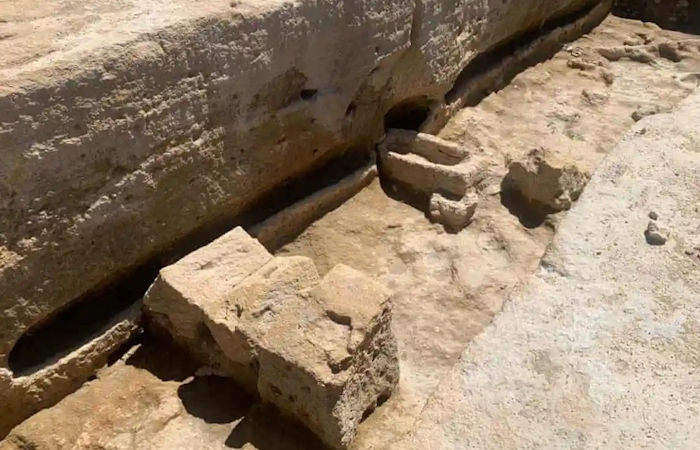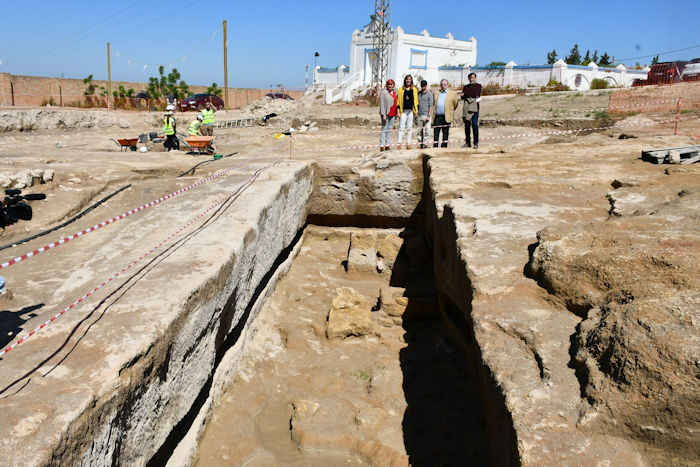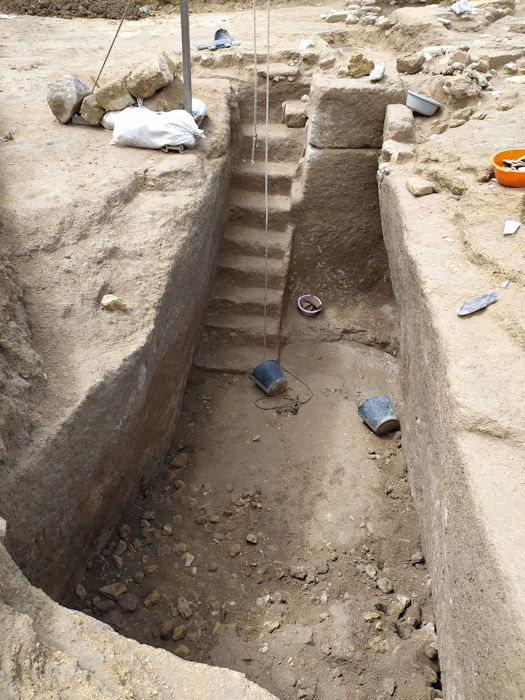Jan Bartek – AncientPages.com – While upgrading water supplies in Andalucia, southern Spain, workers made an unexpected discovery when they came across a well-preserved necropolis of subterranean limestone vaults used by the Phoenicians. The latter lived on the Iberian peninsula 2,500 years ago. The necropolis is extraordinary, scientists say.

The newly uncovered Phoenician necropolis in Osuna. Courtesy Andalusian Government
As explained earlier on AncientPages.com, “the Phoenicians remain one of the most enigmatic ancient civilizations. Our knowledge of these ancient people is based on scholars’ speculations and educated guesses.
Although many Greek, Roman, and Egyptian writers mention the Phoenicians in trade records and military battles, only a few records were left by the original Phoenicians themselves, leaving modern scholars to fill in the blanks through these educated guesses and material culture.”
The Phoenician site was discovered amid the Roman ruins in the town of Osuna, 55 miles (90km) east of Seville. Osuna is primarily known to those outside Spain for acting as a location for the TV series Game of Thrones. Still, it is also a town where archeologists have previously unearthed several Roman ruins. This new finding of a necropolis increases the Osuna’s historical importance.

Credit: Ayuntamiento Osuna
Andújar tells the discovery of the necropolis is extraordinarily surprising and of great historical significance. The lead archaeologist, Mario Delgado, described the discovery as very significant and very unexpected.
Early examinations of the newly unearthed necropolis have turned up eight burial vaults, staircases, and spaces that may have once served as atriums, but many more finds can be made soon.
“To find a necropolis from the Phoenician and Carthaginian era with these characteristics – with eight well tombs, atriums and staircase access – you’d have to look to Sardinia or even Carthage itself.

Credit: Ayuntamiento Osuna
We thought we might find remains from the imperial Roman age, which would be more in keeping with the surroundings, so we were surprised when we found these structures carved from the rock – hypogea [subterranean vaults] – perfectly preserved beneath the Roman levels,” he said.
According to the Mayor of Osuna, Rosario Andújar, who visited the site, the necropolis is from the Phoenician-Punic era, dating from the 5th – 6th centuries B.C. Rosario Andújar has stated it is unusual to find a Phoenician-Carthaginian cemetery located so far inland. So far, most sites like this necropolis have been discovered in coastal areas. “The only similar finds have been made around the coast of Cádiz, which was founded by the Phoenicians in 1100BC and which is one of the oldest continuously inhabited cities in Europe,” the Guardian reports.
The discovery of a Phoenician necropolis in Andalucia may require scientists to the area’s history, Andújar said.
“We all know that excavations in certain parts of our town are likely to turn up remains with varying degrees of historical value, but we’ve never gone this deep before,” said Andújar.
As reported by the Guardian, “the new evidence of a Phoenician-Carthaginian presence in the area, added Andújar, “doesn’t change history – but it does change what we’d known until now about the history of Osuna, and it could be a turning point”.
The mayor said that while more research needed to be done, the luxurious nature of the necropolis suggested it had been built for those at “the highest level” of the social hierarchy.
See also: More Archaeology News
“The operation isn’t over yet and there’s still more to be discovered,” she said. “But the team has already come up with reliable information that attests to the historical importance of all this. Both the graves themselves and the ritual spaces that are being examined suggest that this wasn’t any old burial site.”
Written by Jan Bartek – AncientPages.com Staff Writer





